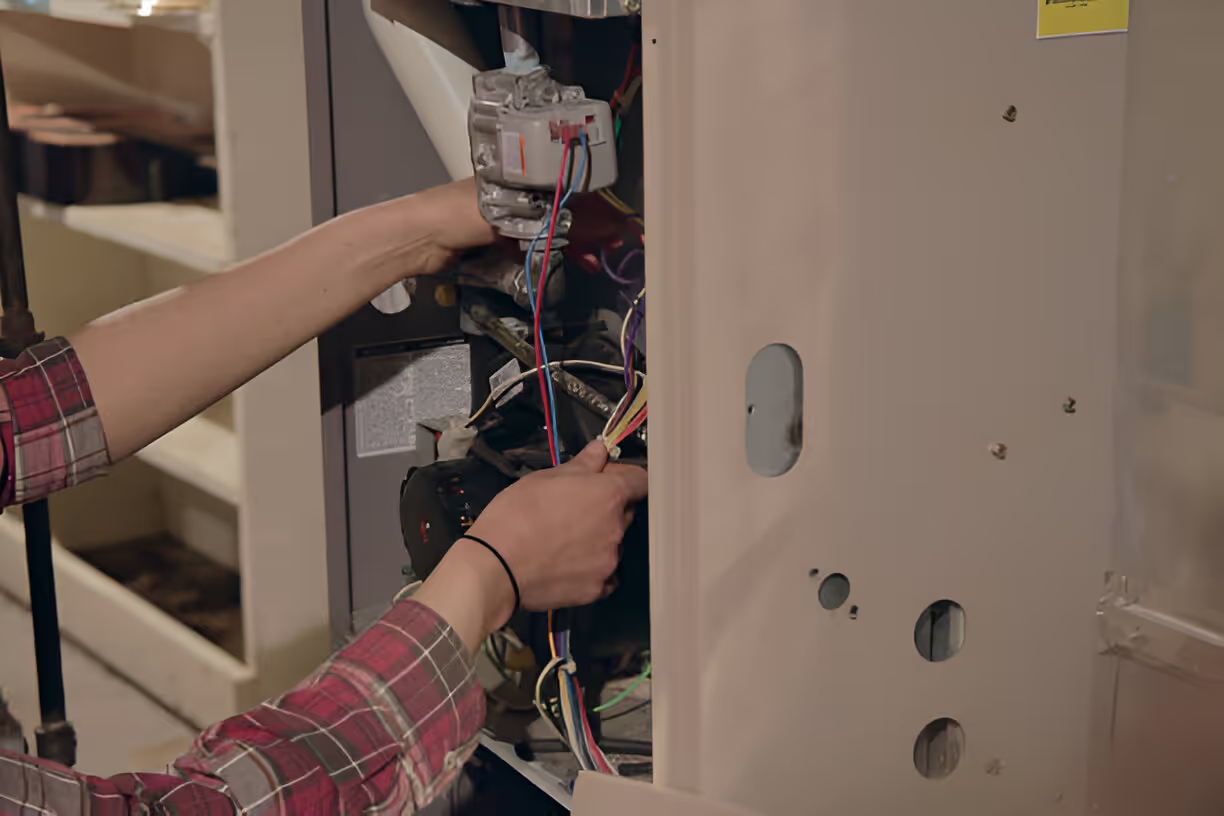Furnace Tune-Up in Santan Valley, AZ
Keeping your furnace in top condition matters in Santan Valley even though winters are milder than northern climates. When temperatures dip, a well-maintained furnace delivers reliable warmth, uses less fuel, and keeps your home safer. A comprehensive furnace tune-up in Santan Valley, AZ focuses on cleaning, a full safety inspection, combustion analysis, airflow and filter checks, efficiency optimization, and a clear list of recommended repairs so you know exactly what to address now and what can wait.

Why a furnace tune-up is important for Santan Valley homes
- Santan Valley homes deal with high dust, desert pollen, and monsoon debris that quickly clog filters and reduce airflow.
- Occasional cold snaps put sudden demand on heating systems; a neglected furnace is more likely to fail when you need it most.
- Gas furnaces require periodic safety checks in areas with common natural gas and propane service to prevent leaks and carbon monoxide risks.
An annual furnace tune-up reduces emergency repairs, improves comfort, and helps your system run safely and efficiently.
Common furnace issues in Santan Valley
- Dirty filters and restricted airflow caused by desert dust and outdoor particulates.
- Incomplete combustion or burner fouling from dusty air and infrequent use.
- Worn blower motors or belts due to heavy on/off cycling during sudden cold snaps.
- Faulty ignition or pilot components after months of inactivity.
- Leaky ducts and poor thermostat calibration that drive up runtime and energy costs.
- Cracked heat exchangers and venting problems—safety concerns that need immediate attention.
What a full furnace tune-up includes
A proper tune-up is a detailed inspection and service that goes beyond replacing a filter. Typical components of a comprehensive furnace tune-up in Santan Valley, AZ:
- Visual safety inspection: Check gas lines, fittings, flue and venting for corrosion, blockages, or loose connections. Verify clearances around the unit.
- Combustion analysis: Measure combustion efficiency and carbon monoxide to ensure safe, efficient burning. Adjust burners for correct flame and fuel-air mix.
- Heat exchanger check: Inspect for cracks or corrosion that can allow combustion gases into your home.
- Burner and ignition cleaning: Clean burners, ignition assemblies, and pilot lights to improve startup reliability.
- Blower assembly service: Clean blower wheel and motor, check speed settings, test capacitors, and lubricate bearings where applicable.
- Airflow and filter assessment: Inspect air filters, return grills, and ductwork for blockages. Recommend filter type and replacement schedule based on local dust levels.
- Electrical and control checks: Tighten electrical connections, test safety switches, limit controls, and thermostat communication.
- Efficiency optimization: Verify gas pressure (when applicable), adjust blower and controls, and confirm proper cycling to minimize energy use.
- Written recommendations: Provide a prioritized list of repairs, safety concerns, and efficiency upgrades with clear explanations.
The tune-up process — what to expect
Technicians follow a systematic process to ensure nothing is missed:
- Start with a safety walkthrough and system history review to understand past issues.
- Shut down the furnace, remove access panels, and clean visible dust and debris.
- Perform combustion and CO testing while the unit runs to identify safety or efficiency problems.
- Inspect and test critical electrical and mechanical components, then run the system through a full heating cycle.
- Report findings and present prioritized recommendations that separate urgent safety repairs from routine improvements.
Typical recommended repairs and why they matter
Below is a practical recommendation list commonly provided after a tune-up, with urgency guidance:
- Filter replacement (Immediate) — Restores airflow, reduces strain on the blower, and improves indoor air quality.
- Duct sealing and return repairs (High) — Prevents heat loss, reduces energy waste, and balances airflow.
- Ignitor or pilot assembly replacement (High) — Fixes startup failures and prevents repeated cycling.
- Blower motor or capacitor replacement (Medium-High) — Restores proper airflow and prevents motor burnout.
- Thermostat calibration or upgrade (Medium) — Improves temperature control and prevents short cycling.
- Gas valve/regulator service (High if faulty) — Essential for safe fuel delivery and proper combustion.
- Heat exchanger repair/replacement (Critical if cracked) — Safety critical; cracks can release carbon monoxide into the home.
- Venting and flue repair (Critical if blocked or corroded) — Ensures combustion gases vent safely outdoors.
- Condensate trap and drain cleaning (Medium) — Necessary for high-efficiency units to prevent water damage and system shutdown.
Priorities are set based on safety risk, impact on reliability, and effect on energy usage so you know which items need immediate attention.
Benefits of annual furnace maintenance in Santan Valley
- Greater reliability during cold snaps: Annual maintenance catches wear before it becomes a failure.
- Lower energy bills: A tuned furnace burns fuel more efficiently and cycles less often.
- Improved indoor air quality: Clean filters and ducts reduce dust, pollen, and particulates common to desert climates.
- Extended equipment life: Routine maintenance reduces stress on components and delays costly replacements.
- Safety assurance: Combustion analysis and heat exchanger checks reduce the risk of carbon monoxide exposure and gas leaks.
Timing and maintenance tips for Santan Valley homeowners
- Schedule your furnace tune-up in early fall so your system is ready before cold weather arrives. After monsoon season is also a good time to clear any accumulated debris.
- Replace basic disposable filters every 1–3 months during high-dust periods; higher-MERV or washable filters may be recommended for homes with allergies.
- Check the thermostat batteries annually and confirm programming for efficient schedules during cooler months.
- Keep the area around the furnace clear and verify outdoor vents are free from debris, nests, or blockages after storms.
A properly documented furnace tune-up gives you confidence in comfort, safety, and efficiency. In Santan Valley, where dust and sudden weather changes affect HVAC performance, annual maintenance is a practical investment in system longevity and household well-being.






